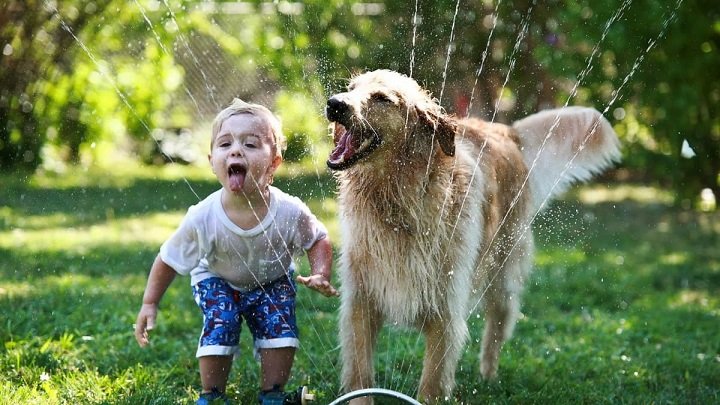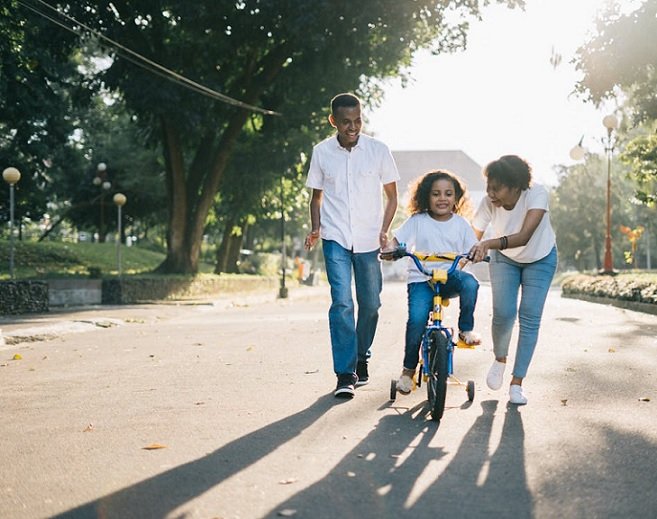How to Keep Your Pet Safe Around Children

Protecting your pet around children is paramount for fostering a safe and harmonious environment within the household. Pets, being integral members of the family, can offer numerous benefits to children, including companionship, emotional support, and valuable life lessons. However, as young ones may not fully comprehend the boundaries and behaviours that ensure a pet’s well-being, it becomes crucial for adults to be responsible for safeguarding the children and the animals.
The importance of keeping pets safe around children cannot be overstated. Pets bring joy, companionship, and valuable life lessons to a child’s life, fostering a unique bond that can last a lifetime. However, young children may not fully comprehend a pet’s needs or understand appropriate behaviours, leading to potential risks for both the child and the animal.
By ensuring a safe environment, we protect our pets from unintentional harm and reduce the likelihood of negative interactions that could strain their relationship with children. Teaching kids to handle pets with kindness, respect boundaries, and supervise their interactions helps create a harmonious atmosphere where children and pets can thrive together.
Responsible pet ownership and education about animal behaviour instil empathy and compassion in children, contributing to a loving and lasting companionship that benefits everyone involved. By establishing guidelines, educating kids about proper pet interaction, and closely supervising their interactions, we can create a nurturing atmosphere where children and pets’ bond flourishes while minimising potential risks or misunderstandings.
Benefits of a Harmonious Relationship Between Pets and Kids:
A positive relationship with pets enriches a child’s life. It helps their emotional, social, and physical development, making them better equipped to handle the challenges of growing up while fostering a lifelong appreciation for animals. A harmonious relationship between pets and kids can bring numerous benefits for both the children and the animals involved. Some of these advantages include:
- Emotional Well-being: Interacting with pets can have a calming and soothing effect on children, reducing stress and anxiety. Pets’ unconditional love and companionship can also boost a child’s self-esteem and confidence.
- Social Development: Pets can serve as a bridge to social interactions for children, especially those who are shy or have difficulty connecting with others. Caring for a pet and engaging in play can improve a child’s communication and social skills.
- Responsibility and Empathy: Caring for a pet instils a sense of responsibility in children as they learn to provide for the animal’s needs. They develop empathy and remember to consider the feelings of their furry companions, understanding that pets have emotions too.
- Physical Activity: Having a pet sometimes encourages kids to be physically active. Activities like walking the dog, playing fetch, or engaging in interactive games promote regular exercise, improving overall health.
- Learning Opportunities: Children can learn valuable life lessons through pet interactions. They understand the importance of consistency, patience, gentle behaviour, and the consequences of neglect or mistreatment.
- Stress Reduction: Pets have been shown to reduce cortisol levels and promote relaxation, which can benefit children and parents alike, particularly in stressful situations.
Enhanced Reading Skills: Reading aloud to pets can boost a child’s reading skills, as they feel comfortable practising without judgement or pressure. - Companionship: Pets offer unwavering friendship, providing children with a friend who is always there to listen and comfort them.
- Understanding Nature: Having a pet allows children to connect with nature and appreciate the importance of animal welfare and conservation.
- Decreased Allergies: Research indicates that children exposed to pets at an early age are least likely to be at risk of developing allergies and asthma, therefore accidents prevention training is important to aware of such potential hazards .
Potential Hazards for Both Pets and Children:
Ensuring the safety of both pets and children requires awareness of potential hazards that could threaten their well-being. To minimise such risks, it’s essential to supervise interactions between pets and children, educate kids on how to handle pets gently and respectfully, and keep hazardous items out of reach. Creating a safe environment and teaching children to understand and respect their pet’s needs will help foster a positive and secure relationship between them. Some common hazards include:
- Rough Handling: Children may unknowingly handle pets too roughly, leading to unintentional injuries to the animal, such as bites or scratches. Similarly, pets not accustomed to children’s play may react defensively.
- Choking Hazards: Small toys, objects, or pet accessories left within reach of children can pose choking hazards if ingested accidentally, that is why is important that individuals consider taking safe guarding children level 2 training.
- Allergies: Pets can trigger allergies in some children, causing respiratory issues, skin reactions, or other allergic responses.
- Tail/Paw Injuries: Children can inadvertently step on a pet’s tail or paw, causing pain and injury to the animal.
- Food Dangers: Some human foods can be toxic to pets. Children may accidentally feed pets harmful substances, leading to illness or worse.
- Escaping Pets: Unsupervised interactions can result in pets running through open doors or gates, risking injury or getting lost.
- Aggressive Behaviour: Pets that are stressed, injured, or feel threatened may exhibit aggressive behaviour towards children.
- Chemicals and Plants: Household chemicals, pesticides, and toxic plants can harm pets and children if ingested or accidentally handled. Additionally, pets can carry fleas, ticks, or other parasites that may be transmitted to children through close contact.
- Emotional Stress: Constant attention, noise, or rough play from children can cause emotional stress for some pets, affecting their well-being.
- Tugging on Ears or Tails: Children might pull on a pet’s ears or tail, which can be painful and distressing for the animal.
- Stairs and Elevated Surfaces: Pets and young children might have difficulty navigating stairs or elevated surfaces, leading to accidents or falls.
- Introducing New Pets: Introducing a new pet into the household requires careful supervision to ensure a smooth and safe transition, especially if there are existing pets and children.
How Do You Avoid These Hazards?
Avoiding hazards involving pets and children requires a proactive and vigilant approach to ensure their safety, including following these precautions and continuously educating children and pets about proper interactions. We can create a safe and harmonious environment where they can thrive together, forging a loving and lasting bond between the two. Here are some essential steps to mitigate potential risks:
- Supervise Interactions: Always supervise interactions between pets and children, especially with younger kids who may not fully understand how to handle animals.
- Educate Children: Teach children about appropriate pet behaviour, including gentle handling, not pulling on ears or tails, and not disturbing pets while they eat or sleep.
- Set Boundaries: Establish clear boundaries for both pets and children. Teach children to respect the pet’s safe space and give them a retreat where they can go if they need time alone.
- Secure Hazardous Items: Keep small toys, pet accessories, and choking hazards out of reach of children and pets.
- Educate about Pet Safety: Teach children about the potential dangers of certain human foods, chemicals, and plants for pets. Encourage them not to feed pets without adult supervision.
- Regular Veterinary Check-ups: Schedule regular check-ups for your pets to ensure they are healthy and free from parasites.
- Flea and Tick Prevention: Use appropriate flea and tick prevention methods to protect both pets and children from infestations.
- Introduce New Pets Carefully: If introducing a new pet into the household, do so gradually and under close supervision to ensure a smooth transition and prevent conflicts.
- Address behavioural Issues: If a pet exhibits aggressive behaviour or shows signs of stress, seek professional help from a veterinarian or animal behaviourist.
- Teach Responsible Pet Ownership: Educate children about the responsibilities of pet ownership, including feeding, grooming, and cleaning up after their pet.
- Prepare for Escaping Pets: Use baby gates or secure fencing to prevent pets from escaping through open doors or gates. Microchipping and proper identification tags can help locate lost pets.
- Pet-proof the Home: Pet-proof your home by securing loose cords, covering electrical outlets, and removing toxic plants.
- Encourage Respect and Empathy: Foster a culture of respect and empathy towards animals, encouraging children to consider their pet’s feelings and needs.
- Manage Playtime: Supervise and moderate playtime between children and pets, ensuring it remains safe and enjoyable for both.
Conclusion:
Fostering a harmonious and safe relationship between pets and children is crucial for both party’s well-being and enriches their lives in numerous ways. By proactively avoiding potential hazards and educating children about responsible pet interactions, we create an environment where pets and kids can coexist happily, sharing unconditional love and valuable life lessons.
The benefits of this positive connection are far-reaching, from promoting emotional well-being and social development in children to instilling a sense of responsibility and empathy. As responsible pet owners and carers, we must ensure the safety of our beloved pets and the children who adore them.
By nurturing this bond, we pave the way for a lifetime of cherished memories and the growth of a compassionate and nurturing generation that values the welfare of all living creatures. Through consistent supervision, education, and love, we can build a lasting and enriching relationship between pets and children, ultimately making our homes a haven of happiness and understanding for all members of the family.












